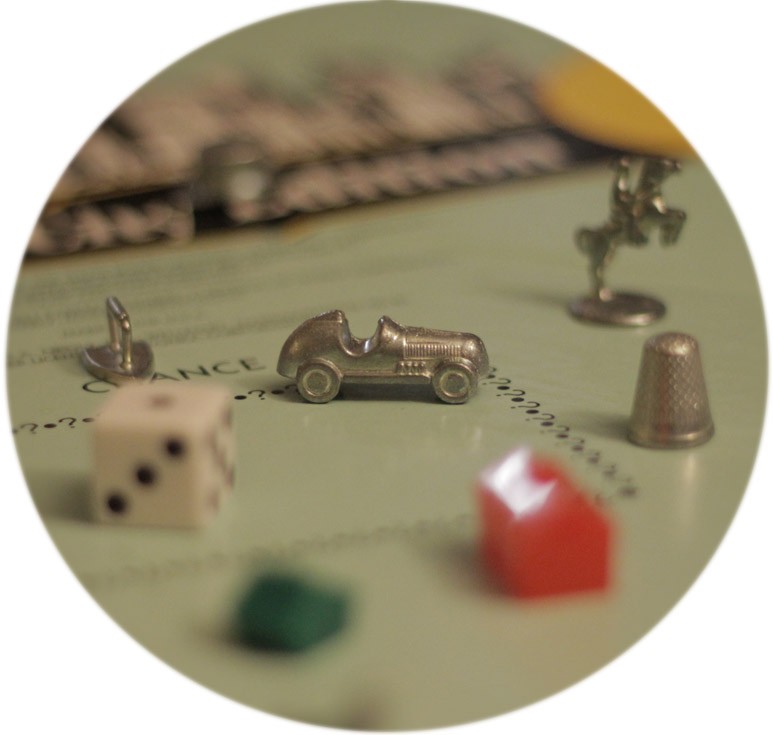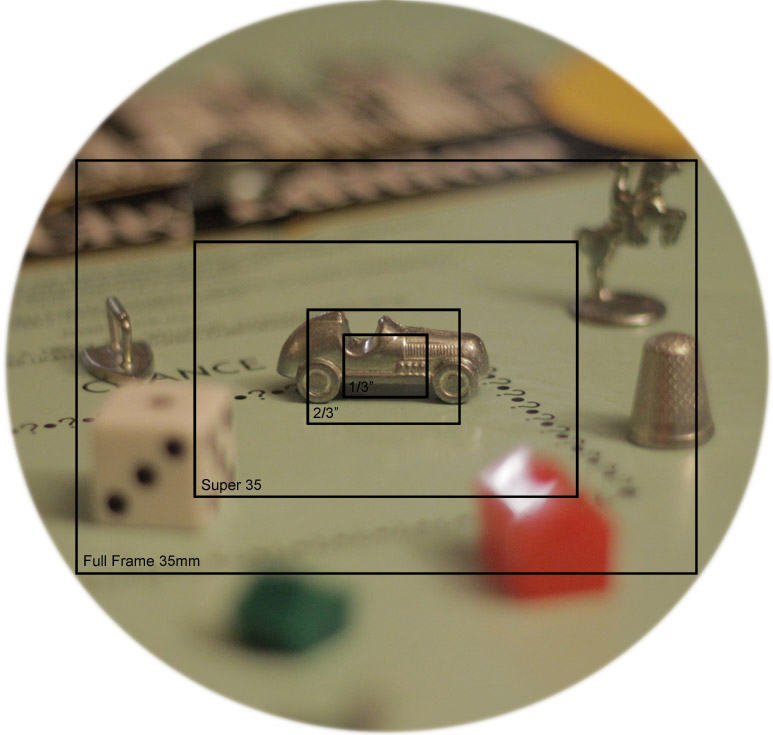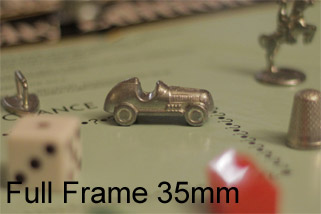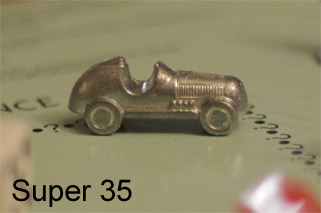Sensor Size and Depth of Field
In my last post, I discussed the relative frame sizes of 35mm still film and 35mm motion picture film, and how this relates to the depth of field of the two formats. I mentioned that imager size and depth of field have an inversely proportional relationship. I find that a lot of people know that this is true, but are confused as to why this is. I was confused by it myself for a long time, and I have never seen it explained in a very clear way, so I am going to try to explain it. If I end up just confusing you further, well that's the chance you take by reading this blog.
If you've ever taken a photography class, or read a book about photography, you no doubt learned the three variables that affect depth of field: focal length, distance to subject, and aperture. Ok, so what about format (sensor size)? How does that come into play? Well, chances are you don't remember hearing about that one, because it's not really a variable. If you are shooting on 35mm film, you're only concerned with the depth of field of 35mm film. When you're taking a picture, chances are you're not going to grab a camera that shoots in another format just because you want more or less depth of field, the way you might change the aperture or choose a different lens for that reason.
The other reason you might not think of sensor size as a variable that affects depth of field is because what it's really affecting is field of view, which only indirectly affects depth of field. Field of view is the extent of what is seen by the camera -- how wide or tight the shot is -- and this is what is being directly affected by sensor size.
Let me show you an example. Let's say the image below is the image circle created by a given lens at a given distance and f-stop. (That's right, lenses create circular images, not rectangular ones.)
This particular image circle is large enough to cover a full frame sensor or 35mm still frame. For the purposes of this explanation, it doesn't matter what lens this is, or what the f-stop or distance are, only that they are constant. The format is the only variable that will be changing here. Now let's look at this same image circle with the frame lines of various formats superimposed:
The full frame film or sensor (which this lens is designed to cover) uses the most of the image circle, and each smaller sensor uses less and less of it, resulting in a tighter and tighter shot. With the same lens, the same distance, and the same f-stop, changing sensor size alters the field of view considerably. Lets take a look at what a picture taken with this lens, distance, and f-stop would look like in each of these formats:
You may notice that the depth of field here isn't changing -- the same distance in front and behind the car appears in focus in each picture -- only the field of view (how much of the image we see) is changing.
So how does this affect depth of field? Well, say we are shooting on a 2/3" sensor, and we want to achieve the same field of view as we see in the full frame image. This particular focal length and distance aren't going to work for us obviously, so what are our choices? Well, we can either move the camera further away, or switch to a wider lens. Both of which, as you may remember from that photography class you took, will increase depth of field. So you will end up with a field of view that is the same as the full frame shot above, but the objects in front of and behind the car won't be nearly as out of focus.
Alternatively, you could stay on this lens at this distance, if you want this amount of depth of field, but you won't feel the shallow depth of field nearly as much. Look at the full frame shot. We feel this shot has shallow depth of field because we see a lot of stuff in the foreground and background that is out of focus. The die and the hotel in front of the car are very blurry, as is the horseback rider behind it. Now look at the 2/3" shot. While the depth of field is just as shallow, we don't see the die, the hotel, or the horseback rider. In fact, we really only see the car, so there is nothing in the frame that's out of focus, and we don't feel that shallow depth of field at all.






May 8th, 2011 - 17:24
Aperture and focusing distance are two of the three things that dictate depth of field, but lens (focal) length is not really the other one. See here http://www.luminous-landscape.com/tutorials/dof2.shtml for details. What lens length alters is the ratio of focus falloff in front and behind the point of focus.
The third thing, more accurately, and which you kind of alluded to, is circle of confusion. To dumb it down to the point of inciting argument, circle of confusion is resolution. Have you watched a Blu-ray and found a face that looks a little bit out of focus, but didn’t on the DVD? Have you taken a photo that looks out of focus on your big monitor at home but didn’t on the DSLR screen? If you had a 10 terapixel photo of your girlfriend at the beach and kept zooming in in Photoshop, ultimately it’d be a single grain of sand in between her toes that’s in focus.
May 9th, 2011 - 19:36
What you’re saying about focal length is true, but a bit too involved for a basic explanation of what sensor size has to do with depth of field. To put it more accurately, focal length affects the apparent depth of field, by magnifying the out of focus areas of the image. For the purposes of this post however, it suffices to say that focal length is a factor affecting depth of field, just like we all read in our Photography I text books.
And, just like you say, circle of confusion is certainly a factor as well, but again, way too involved for the purpose of this post, which is to attempt to explain the relationship between sensor size and depth of field in the simplest way possible. Circle of confusion is essentially just the degree of softness that you consider acceptable, which will change from format to format, but not from shot to shot. The whole concept of depth of field is completely theoretical anyway, since technically only a single plane is ever really in focus. It’s not which grain of sand is in focus, but whether it’s the front of that grain of sand, the back of it, or a plane somewhere in between. However, anyone that’s ever shot video on a 1/3″ consumer camera knows that when you’re zoomed out all the way, looking at a subject more than a few feet from the camera, it doesn’t matter if your aperture is wide open — you can turn that focus ring all you want but there’s no way you’re getting anything out of focus. That’s why I limited my simplistic explanation to factors that I thought most readers already had a good handle on, rather than go into greater detail and potentially just cause more confusion. For the purposes of this article, you needn’t worry about circle of confusion to understand why a larger sensor creates shallower depth of field.
-Josh